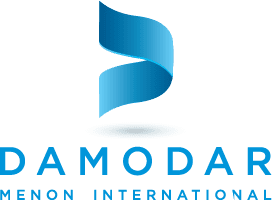Hemp clothing is leading the league in sustainable summer fashion. Its versatility and eco-friendly benefits have captured the attention of woven and knitted fabric manufacturers globally. Notably, hemp’s rapid growth, exceptional strength relative to other fibers, and highyield per acre position it as a key player in various fashion sectors, such as swimwear,activewear, and summer fashion.
But what is hemp, and how can cotton suppliers and buyers use it to their advantage? Let’s read.
What is Hemp Fabric?
Hemp fabric is produced from the fibers extracted from the outer layer of stems of the cannabis sativa plant, a.k.a. The hemp plant. The fabric is similar to linen, jute, bamboo, or modal, all obtained by pulping the stems or bast.
The hemp plant shows extraordinary strength, but because of the misconceptions associated with cannabis, it poses regulatory challenges for farmers and manufacturers.
The truth is due to the thousand years of evolution in hemp cultivation, Cannabis sativa plants that are presently bred for textile purposes are very low in tetrahydrocannabinol (THC) and cannabinoids, psychoactive chemical constituents.
That said, an increasing number of countries are adopting industrial hemp as a mainstream cultivation, which shows the modern resurgence of hemp fabric is approaching its peak.
The hemp plant has a long history of being used for medicinal purposes. The first recorded use of hemp oil can be traced back to at least 3,000 years ago. However, the use of hemp in fabric production is even more ancient, with the oldest known pieces of hemp clothing dating back at least 6,000 years, highlighting hemp's deep-rooted significance in textile history.
Properties and Uses of Hemp Fabric in the Textile Industry
Once processed into fabric, hemp exhibits a similar texture to cotton.
However, it is estimated to be three times stronger than cotton and eight times stronger than other fabrics.
Hemp is highly resistant to shrinkage, pilling, mold, and mildew.
It is easy to dye and softens after washing but doesn’t produce lint like cotton. The more you wear it, the softer it feels on your skin.
Since the fiber is long and sturdy, the resulting fabric is extremely soft and durable. For instance, regular cotton active wear can last ten years, while hemp lasts 2X longer.
It is highly breathable and effectively allows moisture to pass through the skin to the atmosphere, making it ideal for extremely hot climates.
However, it has excellent thermoregulating properties, keeping you warm during winter and cold during summer.
With a few adjustments, cotton suppliers can easily produce organic hemp and earn double the profits.
Hemp Fabric has the following uses:
– Home linen and furnishing, like bedding, curtains, towels, and upholstery
– Personal wear like t-shirts, shirts, kurta, skirts, tops, etc.
– Baby clothing and accessories like diapers
– Lingerie and innerwear
– Canvases for artists
– Bags, mats, and gardening accessories like weed barriers
Benefits of Hemp Fabrics
Cotton buyers can switch from cotton to hemp for an affordable, sustainable alternative to nonbiodegradable synthetic fibers.
Hemp is considered an eco-friendly option for bulk fabric production, unlike cotton.
It is also a renewable resource and can be harvested thrice yearly as the plants mature within 120 days.
Hemp is extremely low maintenance – needs very little water to grow compared to cotton and can grow well in less fertile soils. It yields more fiber from the same land
than other crops. For instance, one hectare of hemp can cultivate the same amount of fabric as 2- 3 hectares of cotton, which is almost 250% more fiber.
The plant has natural antimicrobial properties, making it mold and mildew-resistant. Unlike cotton and polyester, it doesn’t produce a weird odor when not washed or left in the washer for too long.
Hemp fabric is versatile and can be used practically for anything, from laptop bags to clothes and sportswear. It can also be woven along with other yarns to create different textiles.
With an increasing interest in sustainable fabric, cotton buyers can find hemp fabric suppliers through Damodar Menon International. You can submit your inquiry by contacting us. If you are searching for online buying and selling Textile fabric, TEXchange Global serves as the cornerstone for exports and imports, providing a platform for textile companies in India to connect and trade across international markets.
